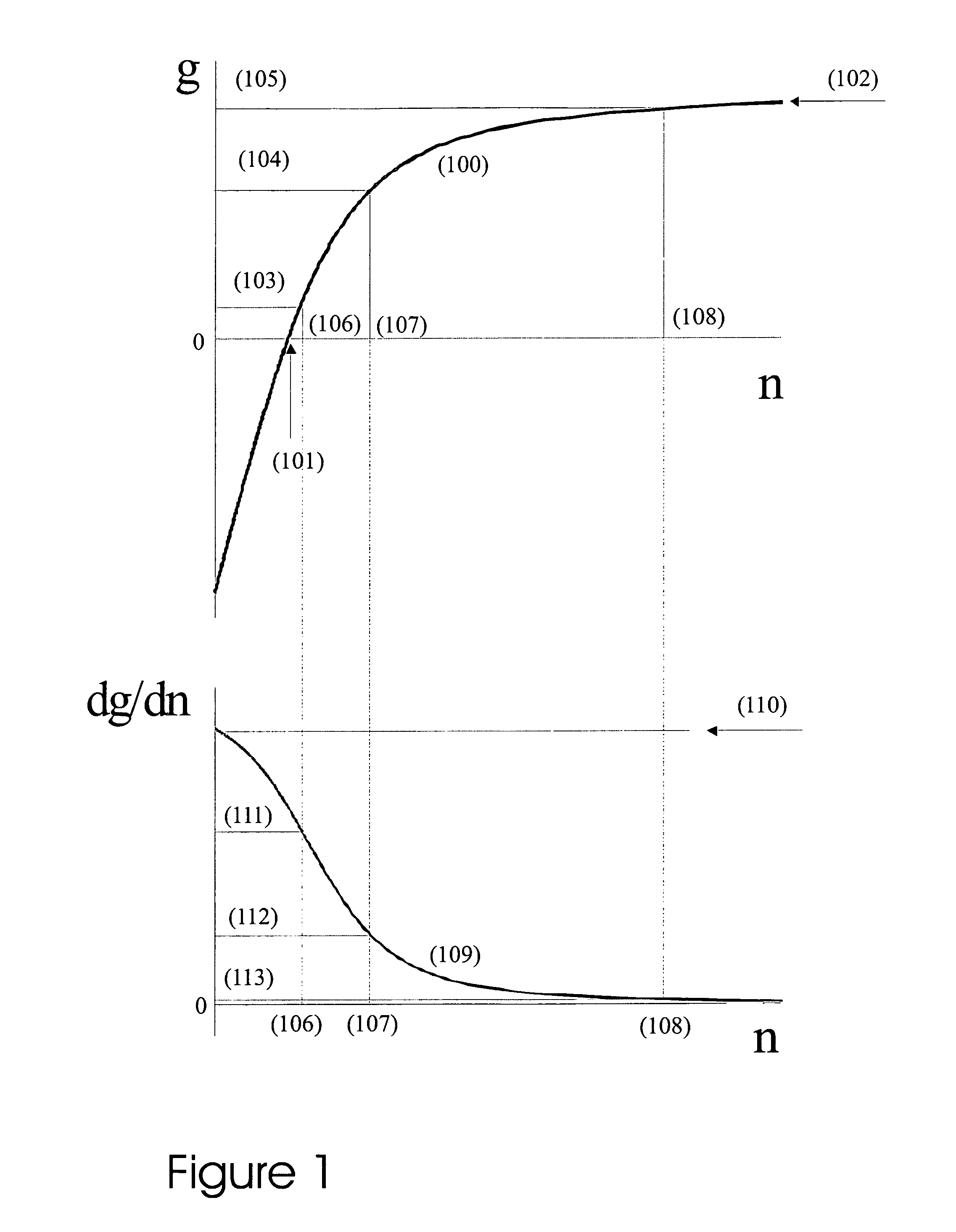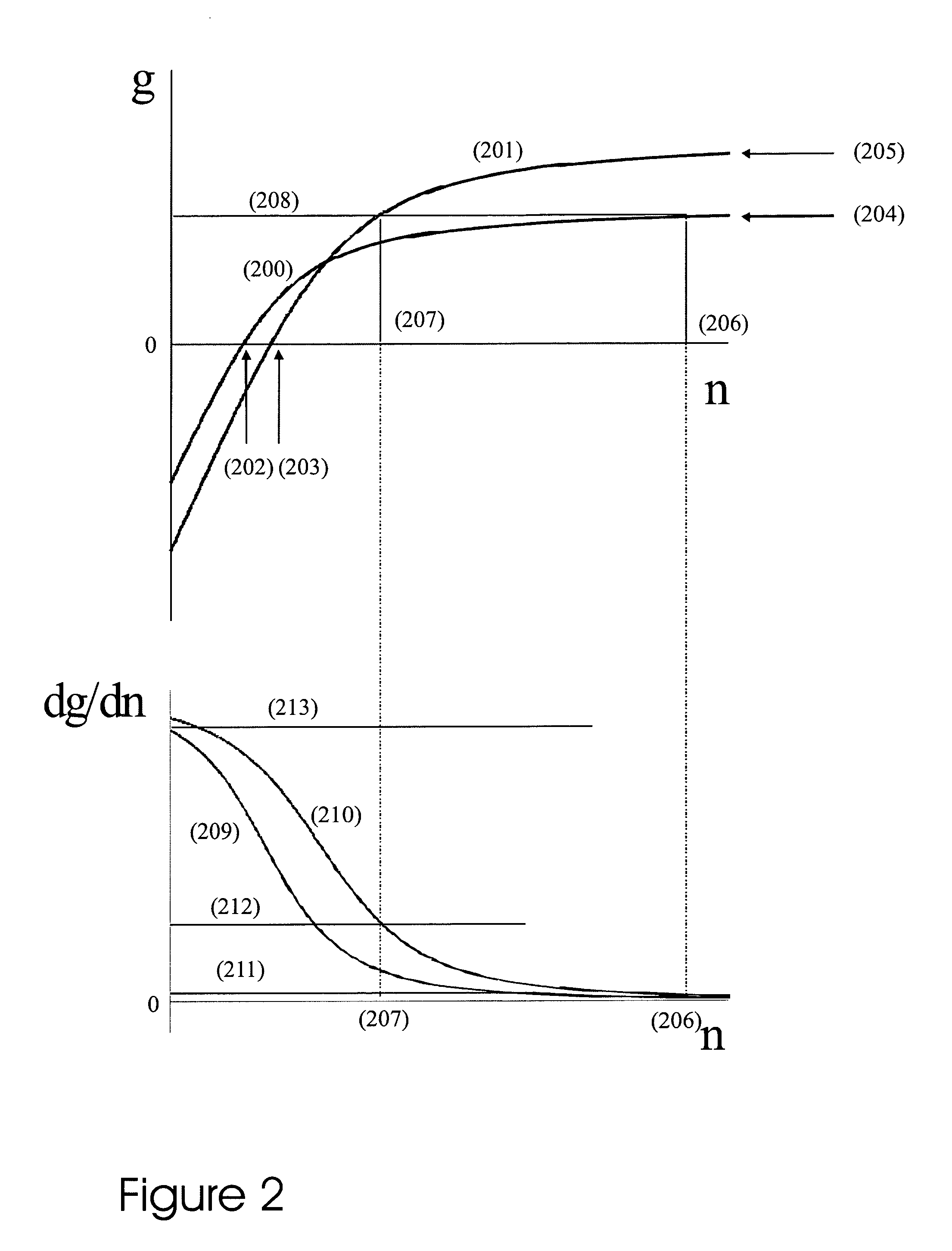Mode-locked quantum dot laser with controllable gain properties by multiple stacking
a quantum dot laser and gain property technology, applied in the field of quantum dot lasers, can solve the problems that none of the prior art for mode-locked none of the prior art for quantum dot lasers optimizes the laser gain characteristics, so as to achieve the effect of gradually controlling the dependence of optical gain on the carrier density
- Summary
- Abstract
- Description
- Claims
- Application Information
AI Technical Summary
Benefits of technology
Problems solved by technology
Method used
Image
Examples
Embodiment Construction
[0023] A method of the present invention optimizes the parameters of a quantum dot array in the gain section of a mode-locked laser such that the optical gain and the differential gain of the quantum dot gain region are both in their optimal range with respect to the optical loss in the optical resonator and with respect to the differential gain in the saturable absorber element. In a monolithic device, the optical resonator is equivalent to the laser cavity. But in other devices, the optical resonator and the laser cavity are different elements. Additional elements may also be coupled to the optical resonator, as discussed in further detail below.
[0024] A device that generates a sequence of optical pulses includes a quantum dot laser. The parameters of a quantum dot array are adjusted such that the characteristics of the laser gain are most suitable for operating the quantum dot laser as a passive or hybrid mode-locked laser with a short pulse width and high stability of mode-lock...
PUM
 Login to View More
Login to View More Abstract
Description
Claims
Application Information
 Login to View More
Login to View More - R&D
- Intellectual Property
- Life Sciences
- Materials
- Tech Scout
- Unparalleled Data Quality
- Higher Quality Content
- 60% Fewer Hallucinations
Browse by: Latest US Patents, China's latest patents, Technical Efficacy Thesaurus, Application Domain, Technology Topic, Popular Technical Reports.
© 2025 PatSnap. All rights reserved.Legal|Privacy policy|Modern Slavery Act Transparency Statement|Sitemap|About US| Contact US: help@patsnap.com



